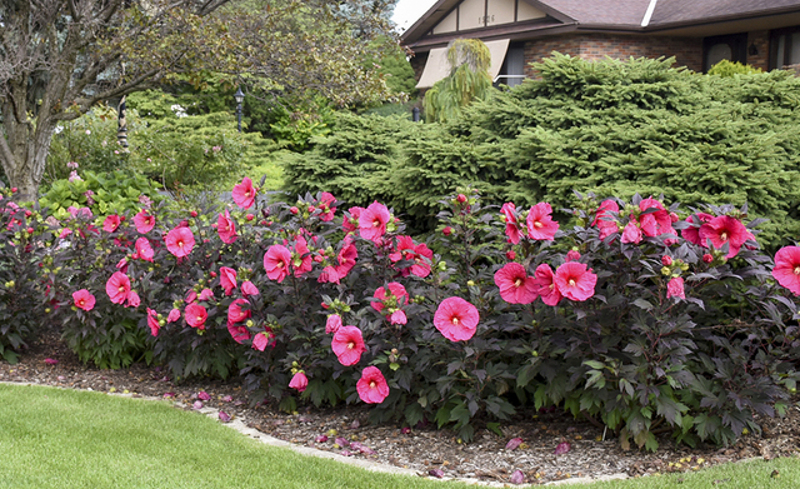The flowers of the Hibiscus plant are show-stoppers. When the shrub blooms, it is dotted with large, bell-shaped flowers that almost look like they are made from crepe paper and feature beautiful, saturated colors like red, pink, yellow, and more. There are different varieties of Hibiscus.
Hardy plants can live in colder climates, like USDA growing zones 4 and up, as long as they are protected during the winter. Tropical varieties of Hibiscus thrive outdoors in zones 9 and up.

Hibiscus is relatively easy to care for and grow, especially when planted and maintained the correct way. Find out what Hibiscus needs to thrive.
What You Need To Plant Hibiscus
- Shovel
- Compost or manure
- Garden spade
- Support for the plant
Where to Plant Hibiscus
Hibiscus plants are not very fussy, but they require full sunlight. In order for these plants to push out the showy flowers they are known for, they need plenty of light exposure. The ideal spot will have at least 6 hours of sunlight per day.
The soil requirements for Hibiscus are not as stringent, just as long as the soil drains well. While this plant has somewhat high water needs, the roots do not tolerate standing water, so drainage is essential. Hibiscus can do well in sandy or loamy soil, which will promote drainage. Adding organic matter, like compost or manure, will provide nutrition and help the plant thrive. When planting Hibiscus, the entire root ball should be covered with earth.
Hibiscus Spacing
With proper care, Hibiscus shrubs can grow about 8 feet tall and several feet wide, so select a spot that the plant can grow into. Space Hibiscus plants 3 to 4 feet apart. Some varieties will develop wood-like stems that can support the plant. Non-wood Hibiscus varieties will need help staying upright, so plant near a fence or place a stake near the plant to provide the assistance it needs.

Steps To Plant Hibiscus
When planting a Hibiscus, you should find a location that will accommodate the plant after several years of growth. Once you have the right spot, dig a hole that is about twice the size of the root ball. Amend, or mix organic matter like compost or manure with the soil to promote healthy growth. Water the Hibiscus right away and continue to water daily for the first several weeks.
Step 1 - Pick out a good spot
Step 2 - Dig a hole
Step 3 - Amend the soil with organic material
Step 4 - Place the root ball, so the top is even with the surface of the ground
Step 5 - Backfill the hole
Step 6 - Cover the area with mulch to retain moisture
Step 7 - Add a support
When to Plant Hibiscus
Hibiscus can be planted at any time during the growing season, but it is generally best to plant in the spring, especially in colder areas. The longer the plant has to settle in, the better equipped it will be to handle winter. If planting Hibiscus later in the growing season, the plant may need more frequent watering to keep it moist during the summer heat.
Any time of day is good to plant Hibiscus during cool springtime weather. Afternoons and evenings are usually a good time to plant during the summer since this will give the Hibiscus a bit more time to settle in before the temperature creeps up.
Transplanting Hibiscus
Healthy Hibiscus plants can be dug up and manually split apart. You may need to use a clean, sharp knife to separate the root ball. Both sections should be replanted and given water right away. Spring or early fall are ideal times to divide or transplant Hibiscus. The fall is a slightly better time because the plant can acclimate during the winter, and the move will be less likely to interfere with new springtime growth.
Hibiscus can be propagated through cuttings, and the plant can handle both water and soil propagation.
 |
Author Alison Cotsonas - Published 12-13-2021 |
